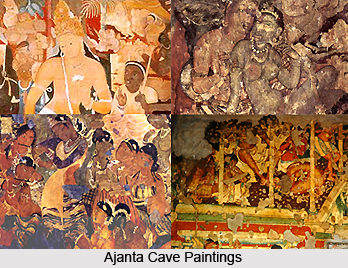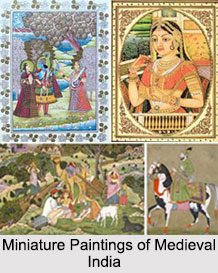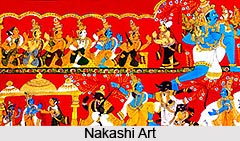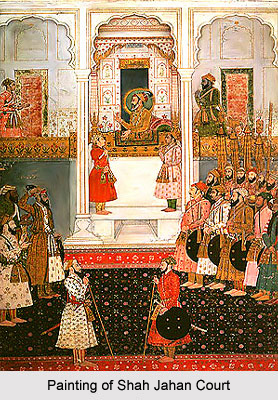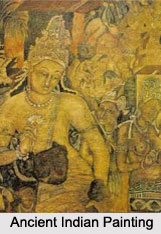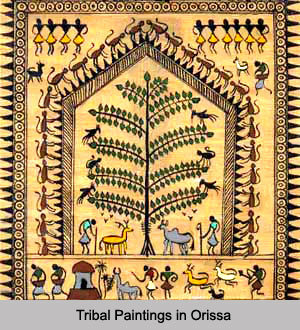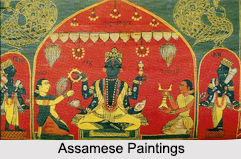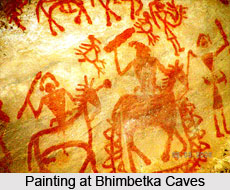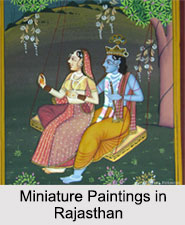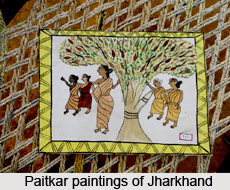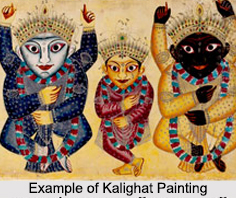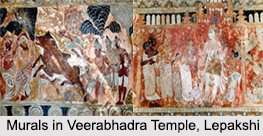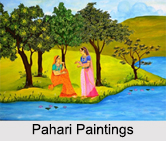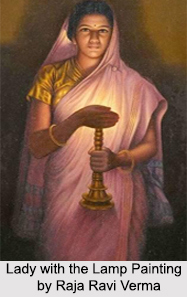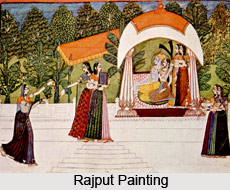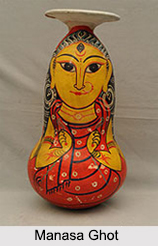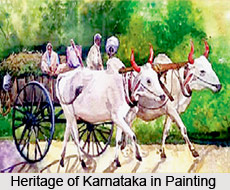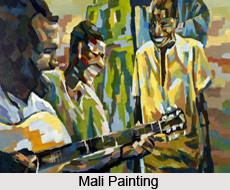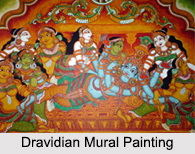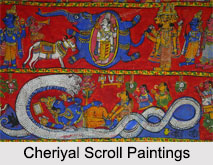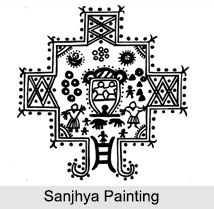 Folk paintings in Rajasthan are as different as its culture. The folk paintings in Rajasthan are completely handmade. They bring numerous talented painters of Rajasthan. The folk paintings of Rajasthan deal with pictorial depictions of popular Hindu gods, human portraits, common customs and rituals and the elements of nature. Some of the popular folk paintings of Rajasthan include sanjhya painting, phad painting, pichwai painting and miniature painting.
Folk paintings in Rajasthan are as different as its culture. The folk paintings in Rajasthan are completely handmade. They bring numerous talented painters of Rajasthan. The folk paintings of Rajasthan deal with pictorial depictions of popular Hindu gods, human portraits, common customs and rituals and the elements of nature. Some of the popular folk paintings of Rajasthan include sanjhya painting, phad painting, pichwai painting and miniature painting.
In Rajasthan, the folk paintings are typically done on some particular occasions like marriage, birth ritual and festivals. This tradition of folk paintings is found in villages and rural areas practiced by a variety of tribes. They are very unique, new and done with underdone-hand.
History of the Folk Paintings in Rajasthan
Throughout the early medieval period of the early 5th century, an exceptional art form was taking outline in and around two areas of western India namely, Marudesh and Gurjaratra which are Rajasthan and Gujarat in present day. Throughout this period, the Marudesh and Gurjaratra saw wonderful changes in the political and cultural field and these changes lent a helping hand in the further development of art.
Different types of the Folk Paintings in Rajasthan
Following are the different folk paintings of Rajasthan:
•Sanjhya Painting: It is a traditional wall painting and is mostly popular in Mewar and Malwa regions. Young girls, especially the newlywed paint the walls for 14 to 15 days during the pitrapaksha. Every day in the evening, they wash the wall with cow dung and ochre. They use various materials to adorn the walls like motifs (made from the lumps of cow dung), flower, leaves, colourful papers of gilt, vermilion, head grains of maize and wheat etc.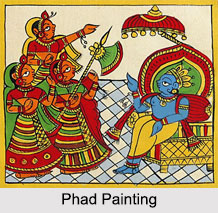 On the final day, the images are immersed in a river, pond or any source of water.
On the final day, the images are immersed in a river, pond or any source of water.
•Thapa: In Rajasthan this art has gained different forms and multilevel representation. Along with the common hand prints, there are iconic depictions of a variety of gods and goddesses which are drawn in festivals and spiritual ceremonies to settle precise deities. Many of these drawings are connected with exact seasons.
•Phad Painting - Phad painting or Phad is a style of religious scroll painting. Since the last two centuries, the Joshi families of Bhilwara, Shahpura in Bhilwara district of Rajasthan are widely known as the traditional artists of Phad painting. Phad painting is traditionally done on a long piece of cloth or canvas, known as phad. These sorts of painting feature the narratives of the folk deities of Rajasthan, mostly of Pabuji and Devnarayan. Traditionally vegetable colours are used in these paintings. Some of the noted artists of phad painting are Shree Lal Joshi, Nand Kishor Joshi, Prakash Joshi and Shanti Lal Joshi.
•Bhil tribal painting: In Rajasthan the Bhil tribal painting is recognized as Mandana though it is different in approach. These paintings generally start from the foot of the wall and reach up to the height of eight to ten feet. The exterior is organized for painting by plastering the wall with black or white coloured clay and cow-dung mix.
•Gudna motifs: Gudna demotes to the style of painting, which is made by piercing the body with the help of a needle and injecting it with black colour that attained from lamp dirt. Use of kumkum, milk of aak, leaves of bilva plant and juice of harsingar flower are also used at times. Both men and women get their bodies painted in this method. Both tribals and non-tribals are tender of Gudna.
•Pichhwai Painting - It is a very ancient form of art passed on from generation to generation. This painting has a very devotional subject matter towards Lord Krishna. Pichhwai paintings exhibit Lord Krishna in different moods, body postures, and attires. The aim of Pichhwais is to narrate tales of Krishna to the illiterate. Pichhwai artists can be found in Chitron Ki Gali (Street of paintings) and Chitrakaron Ka Mohallah (colony of painters).
Miniature Painting - Rajasthan is regarded as one of the pioneer seats of miniature paintings in India. It is believed that this art form was introduced to the land of India by the Mughals, who brought the much-revealed art form from Persia. Miniature paintings are quite colourful but small in size. For creating miniature paintings, materials like paper, ivory panels, wooden tablets, leather, marble, cloth and walls are required. The handmade colours from minerals, vegetables, precious stones, conch shells are traditionally used in these paintings.
